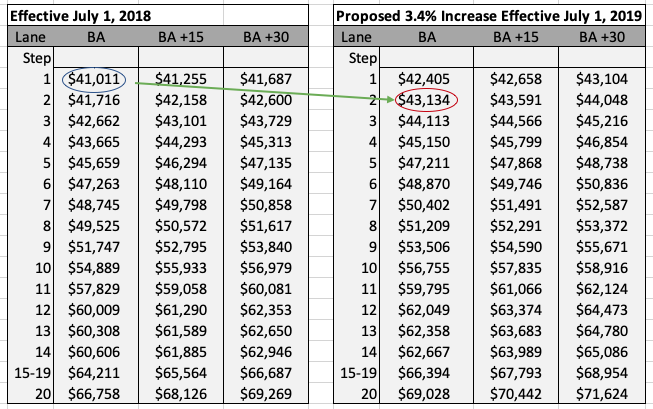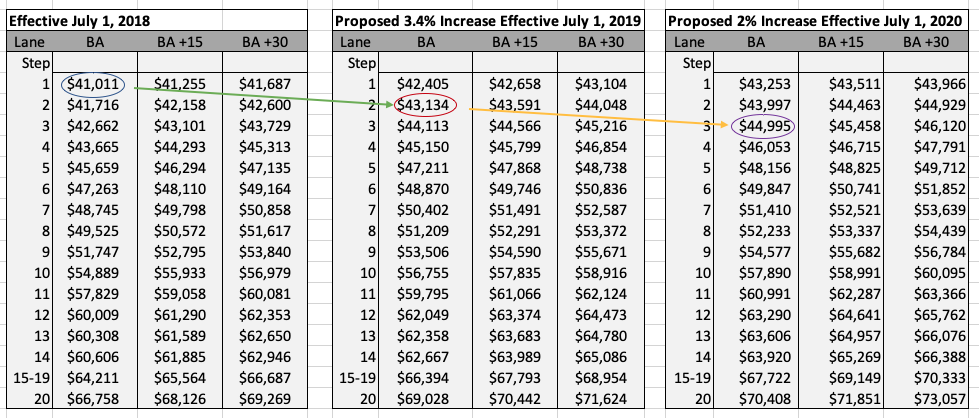Teachers’ union proposed salary increases are misleading
Last Thursday, the St. Paul teachers’ union held a vote to authorize a strike. In accordance with state law, the union must give the school district at least 10 days’ notice before the first day of a strike, allowing time to continue negotiations and possibly reach an agreement to prevent the walkout from taking place. The next mediation session is scheduled for March 5, with more mediation dates expected. The union is also expected to announce the strike date sometime this week.
The first two proposals for the 2019-2021 contract negotiations were submitted to the district May 30, 2019 and were followed by 29 other proposals over the course of nine public bargaining sessions.
Teacher Salaries
The last proposal, on wages and benefits, was submitted in December, and this is one area the district and union are butting heads on. The union is pushing to increase the teacher salary schedule by 3.4 percent the first year of the contract and by 2 percent the second year of the contract, but that is on top of the built-in step and lane progression.
The union’s claim that these salary increases aren’t really asking too much from the district is misleading because it doesn’t paint the full salary increase picture.
Teacher salary schedules include steps and lanes. The “steps” are the number of years a teacher has been teaching, and the “lanes” are the level of education the teacher has. Because of this formula, a teacher’s salary increases every year up to 20 years. (Upon completion of 24 years of teaching, teachers receive an annual stipend in addition to their salary, referred to as a longevity stipend. This amount is either $500 or $1,200, depending on the teacher’s level of education.)

Let’s look at what two hypothetical teachers earned under the last contract the union negotiated with the school district. For the 2018-2019 school year, a first-year teacher with a bachelor’s degree would fall under Step 1, Lane BA and would have earned $41,011. Following the progression formula, it would make sense to assume the teacher would fall under Step 2, Lane BA during his or her second year of teaching, which would increase the teacher’s pay to $41,716 or nearly a 2 percent increase (1.72 percent) over the previous year.
But it’s not quite that simple. The salary schedule shown above expired June 30, 2019 when the collective bargaining agreement between the union and the school district expired. For the new contract, the union is demanding the last salary schedule increase by 3.4 percent, which would be an increase on top of the salary increase that is built into step and lane progression.
This means the teacher example from above would receive a salary increase of 5.2 percent over the previous year.

And for the year after that, the union wants the salary schedule to increase by 2 percent, which would result in the same teacher example from above receiving a salary increase of 4.3 percent over the previous year for a salary of $44,995. That is nearly a 10 percent salary increase since the teacher first started teaching.
And those increases are assuming the teacher does not pursue additional education. Let’s look at an example of a teacher who is earning a Master’s degree. Under the expired salary schedule, a teacher in his or her sixth year of teaching with 45 credits toward the degree would fall under Step 6, Lane BA +45 with a salary of $50,432. Assuming the teacher completed the degree right before the new school year, the teacher would then fall under Step 7, Lane +60/MA. Under the union’s proposed 3.4 percent increase, this teacher’s salary would increase 13.4 percent when compared to the previous year—from $50,432 to $57,180. The next year, under the union’s 2 percent increase, the teacher example would see a salary increase of 5.2 percent.
All of this shows that the union does not account for pay raises built into the step and lane progression when it talks about striking for salary increases—which is misleading. Because teachers do not stay in the same step twice (until they reach 20 years in the profession), their salary will increase every year.
The union’s focus on money and its threat to strike over its proposed contractual demands is not “all about the kids.” If the union truly wants to serve our students, it will reach an agreement with the district that is within its means and keep students in their desks and teachers in their classrooms.

